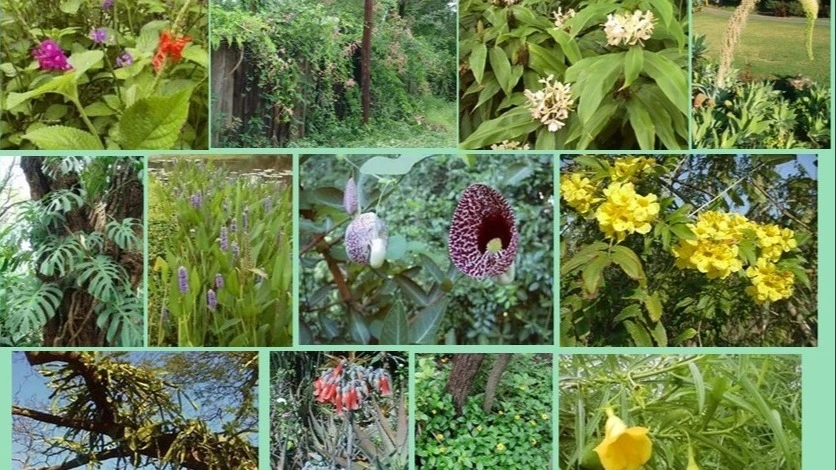SPECIAL REPORT: Tanzania’s black rhino population gains against invasive species -2

Nearly 63 years ago, Tanzania's first President, the late Mwalimu Julius Nyerere, emphasized the crucial role that wildlife plays in the nation's economy, particularly through tourism.
Speaking at the 1961 symposium on Conservation of Nature and Natural Resources in Arusha, Nyerere's address laid the foundation for wildlife conservation in post-independence Tanzania.
This historic speech became known as the "Arusha Manifesto."
Nyerere highlighted that the survival of wildlife is a matter of great concern for all Africans.
He noted that wild creatures and their habitats are not only sources of wonder and inspiration but also vital components of the continent’s natural resources, contributing significantly to the economy through tourism.
In his words, he said; "In accepting the trusteeship of our wildlife, we solemnly declare that we will do everything in our power to ensure that our children's grandchildren enjoy this precious inheritance."
Nyerere’s vision for conservation continues to resonate today, particularly in addressing the decline of black rhinos in Tanzania, across Africa, and globally.
Philbert Ngoti, National Rhino Coordinator at the Ministry of Tourism and Natural Resources, recently discussed the challenges faced by Tanzania's black rhino population.
Since the late 1960s, the population has sharply declined due to various factors, including the spread of invasive alien plant species (IAPS).
Inadequate control of these species in national parks and game reserves has contributed to a dramatic decrease in rhino numbers—from over 1,000 in 2009 to just 161 in 2019. In the late 1960s, there were around 10,000 rhinos.
In response to this crisis, the Tanzanian government implemented the National Rhino Conservation Action Plan (2019-2023), which has significantly reduced the spread of IAPS and positively impacted rhino populations.
Ngoti explained that invasive species are challenging and expensive to control and eradicate, with their ecological effects often being irreversible.
The species whether plants or animals, can multiply rapidly, displacing indigenous species and disrupting ecosystems.
“We have successfully eliminated invasive alien species in national parks and other conservation areas, creating ecosystems favorable for the survival of black rhinos,” Ngoti stated.
Research has revealed that Tanzania’s national parks were infested with various invasive plant species, including succulents, shrubs, and parasites.
Alien animal species, such as invertebrates, amphibians, fish, reptiles, insects, and birds, also posed significant threats.
Ngoti emphasized that efforts under the National Rhino Conservation Action Plan have nearly eradicated IAPS in protected areas. The negative impacts of these species on biodiversity, such as predation, parasitism, competition for resources, and disease, have been substantially mitigated.
According to Ngoti, rhino health-related mortalities have dropped to less than 0.5 percent during the plan’s implementation, down from an estimated 10 percent.
Illegal Rhino killings have also decreased to less than one percent, compared to the previous rate of eight percent.
“We have improved our investigation of wildlife crimes, intelligence gathering, and prosecution of organized rhino poaching, as well as enhancing control over rhino horn trafficking,” said Ngoti.
According to the guidelines for Invasive Alien Species Management in Tanzania’s National Parks 2017 by the Tanzania National Parks Authority (TANAPA) the challenge related to control over invasive alien species is complicated because their introduction and spread are externally driven by factors such as increasing human mobility, encroachment of protected areas and climate change.
The introduction of aliens in national parks and other conserved areas whether by humans, mammals, birds, insects or parasites are prohibited by the existing laws and policies.
For instance, the Environmental Management Act, 2004, Section 67 (2) (h) prescribes prevention of the introduction, control or eradication of alien species which threaten ecosystems, habitats or species.
On the other hand, the Wildlife Policy 1998 Section 3.3.3 (vii) provides for ‘regulating the importation of exotic species and re-introduction of a species known to be indigenous to the area in order to safeguard against negative effects resulting from their introduction and reintroduction into the wild’.
This journalist has learned that the National Policy for Tanzania National Parks, 2011 Section 3.7 sub-section 3.7.7 defines what exotic species are and prohibits introduction of new exotic species.
The policy provides for effective control including eradication of exotic species wherever such species threaten or impact on national park resources or public health and when control is feasible.
Further, the Natural Wealth and Resources (Permanent Sovereignty) Act, 2017 provides for conservation and protection of natural resources to ensure that the country and its citizens benefit from such resources.
Tanzania has also ratified the Convention on Biological Biodiversity (CBD), its subsequent protocols and other biodiversity related agreements.
The two legislatives provide opportunities for complementing government efforts towards conserving wildlife habitats and biological diversity.
The Environmental Management Act 2004 calls for the conservation of biological diversity, the sustainable use of its components and the fair and equitable sharing of the benefits arising out of the utilization of genetic resources.
The National Environmental Policy, 2021, on the other hand, states that Tanzania is one of the mega rich biodiversity hotspots in the world with about 14,000 known important plant and animal species.
It is among the top 12 countries with high biodiversity and among 15 countries with the highest number of endemic species.
The policy highlights that the country hosts six out of the 25 globally known biodiversity hotspots located in various terrestrial and marine ecosystems.
It asserts that the importance of these wildlife resources lies in their biological value in terms of value of the species and habitat found therein, their economic value and the potential to contribute to sustainable development of the country.
“Considerable achievements have been made in addressing the loss of wildlife habitats and biodiversity. This is demonstrated by the size of land under protection, which is about 40 percent of the total land area which is 6.5 percent marine and 33 percent terrestrial,” reads part of the policy.
The policy clarifies that the country’s total protected areas cover approximately 28 million ha (58.2 percent) found in both wildlife protected areas and forest reserves.
It underlines that forest and wildlife conservation have improved whereby forest plantations have increased from 16 to 22, while natural forests have increased from 597 to 802 since 1961 and nature reserved forests increased from 12 to17.
These forests, reads the policy, have been fully proclaimed as Nature Forest Reserves (NFRs) to conserve wildlife habitats and its biodiversity and include Amani (covering 8,380 hectares) and Uluguru (covering 24,115 hectares).
The list goes on with Kilombero (covering 134,511 hectares); Nilo (covering 6,225 hectares); Rungwe (covering 13,652 hectares); Magamba (covering 9,283 hectares); Chome (covering 14,283 hectares) and Mkingu (covering 23,388 hectares).
By extension, there is Udzungwa Scarp (covering 32,763 hectares), Rondo Plateau (covering 14,000 hectares); Minziro (covering 25,000 hectares) and Mount Hanang (covering 5,871 hectares).
Wetlands forests which did not exist before 1961 have now increased to 44 while national parks are 22.
At present, a network of wildlife Protected Areas (PAs) in Tanzania comprises 22 National Parks, 24 Game Reserves, 27 Game Controlled Areas, 38 Wildlife Management Areas (WMA’s) and the Ngorongoro Conservation Area.
“The importance of these wildlife resources lies in their biological value in terms of value of the species and habitat found therein, their economic value and the potential to contribute to sustainable development of the country,” reads the environmental policy in part.
To be continued.
Top Headlines
© 2024 IPPMEDIA.COM. ALL RIGHTS RESERVED

























